Vino In My Dino
-
A Few of My Favorite Things
December 27, 2017 16:46
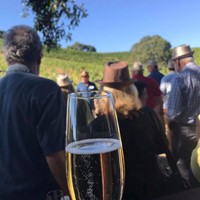
Reflections on the year, our 90th anniversary if you haven’t heard, and the highlights on becoming 90.
A few of my favorite wine moments this year includes our 90th anniversary toast in the vineyard;
being on hand when my dad was honored both as an Icon of Sonoma County and a Lifetime Achievement Award;
doing 5 ‘taste ups’ (which are tweet up wine and food pairings) with wine blogging friends across the U.S.;
accomplishing our goal of visiting 90 cities in celebration of our 90th anniversary;
harvesting the last grapes 10 days before the firestorm hit Sonoma County;
going on a first wine cruise along the Danube River in November-and meeting the best people;
raising $5000 for CAWineStrong by donating $1 for every bottle purchased between October 15 and November 30.
This vintage will be defined by the monumental firestorm but the year itself will, for us here at Pedroncelli, be remembered as our ninth decade in the wine business where we ride the waves of the market, what Mother Nature throws at us and we keep our head up looking to the Next Ninety.
-
Recipes for a Winter's Solstice
December 21, 2017 11:54

There is something hopeful about the Winter Solstice for me. Yes it is the shortest day of the year-5 hours and 14 minutes shorter than the June Solstice. Yet as we advance along the days and weeks we gain a few moments of sun each day as the earth turns and we head into a new year.
I put together a few of my favorite recipes for winter time cooking. Some are easy and quick while others require a day’s attention. I do quite a bit of cooking and baking this time of year-the weather and our stomachs seem to yearn for home-made goods.
Chex mix by any other name and I grew up with this appetizer made by my aunt Marianne and I renamed it in her honor: Marianne’s Mix
Think of this as the appetizer version of Tomato Soup with grilled cheese: Cheesy Tomato Dip
This soup comes with a recipe for Cinnamon Croutons for a warm winter spice feel: Butternut Squash Soup
Michele Anna Jordan combines two of my favorite vegetables and braises them-a great side dish too: Braised Fennel & Celery
This one will take some time but it is worth it with all the layers of flavor! Beef Brisket with Wild Mushrooms
Quick and easy, this is our go-to midweek chicken dish: Chicken Chili Verde
Translated as 'strong bread' the spicy flavors and nutty taste make this a unique dessert. Panforte
Chocolate, coffee, creamy-all great things in a dessert! Mocha Pot de Cremé
On final recipe is a favorite drink made with our Port and only three ingredients! Portspresso
Enjoy all these recipes as winter has us hunkering down and remember-in a few short months our horizons will be brighter!
-
Home Ranch in December
November 30, 2017 16:26

We’ve received a couple of inches of rain in the last two months and you can see the greening of the vineyards bringing back life to the hillsides surrounding the winery. Fall colors are still apparent although a little raggedy looking as the leaves are falling off as the vine reverts to dormancy and the chill in the air indicates winter is coming.
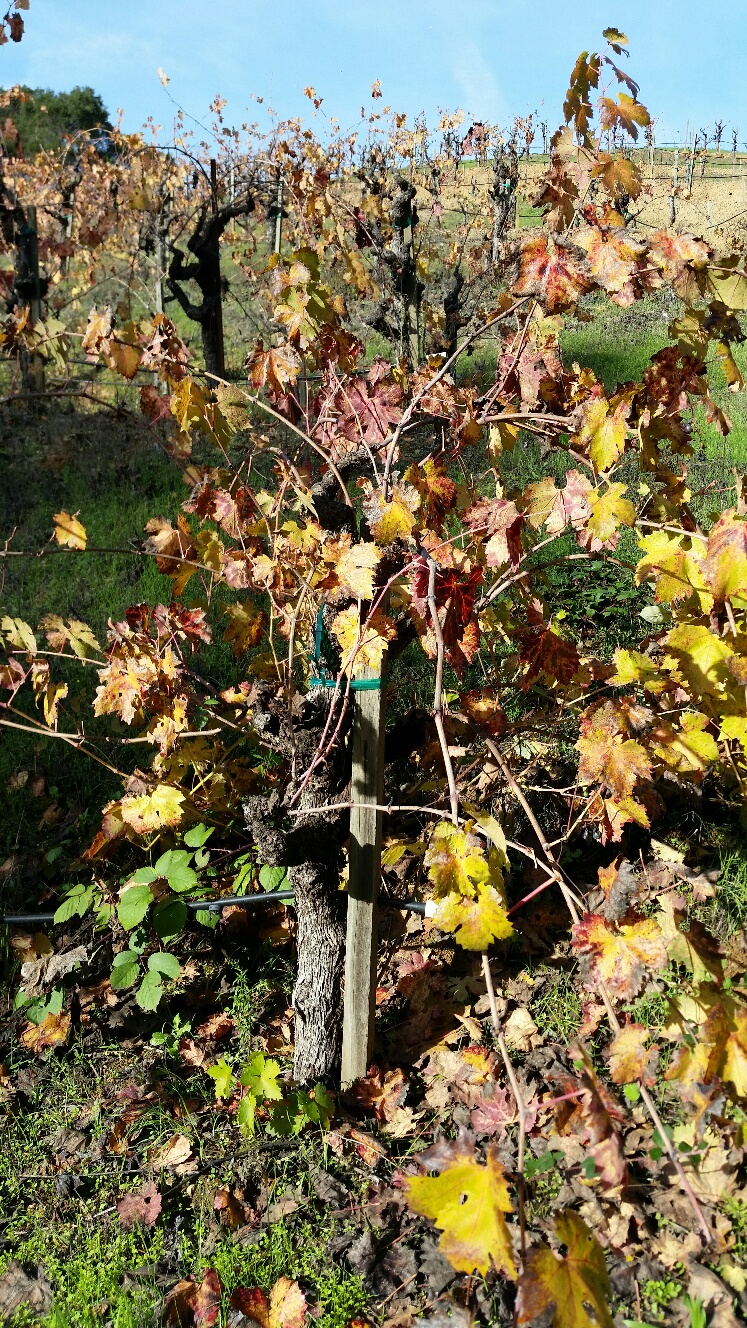
Pruning begins in the Mother Clone Zinfandel vineyard readying it for its’ winter nap.
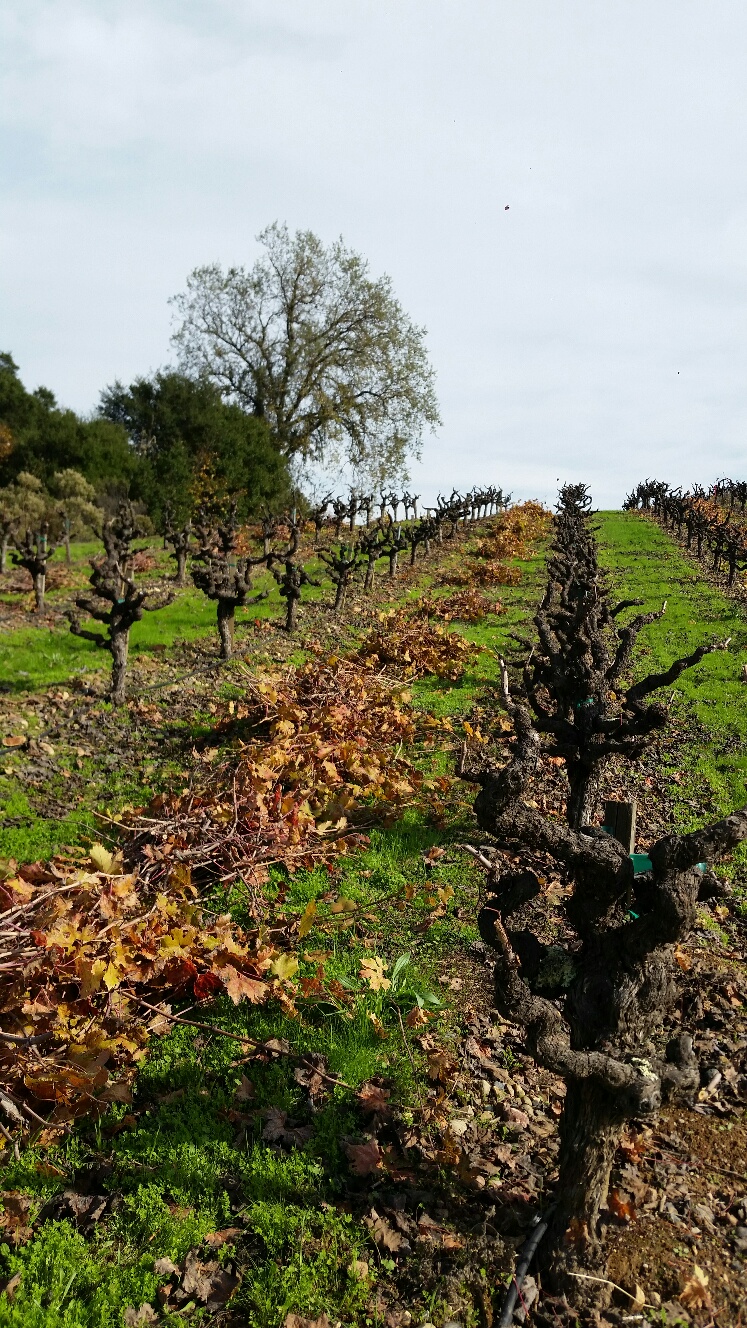
Things are pretty quiet out here while all the barrel work continues inside the cellar. Moss growing on an oak tree along the vineyard path.
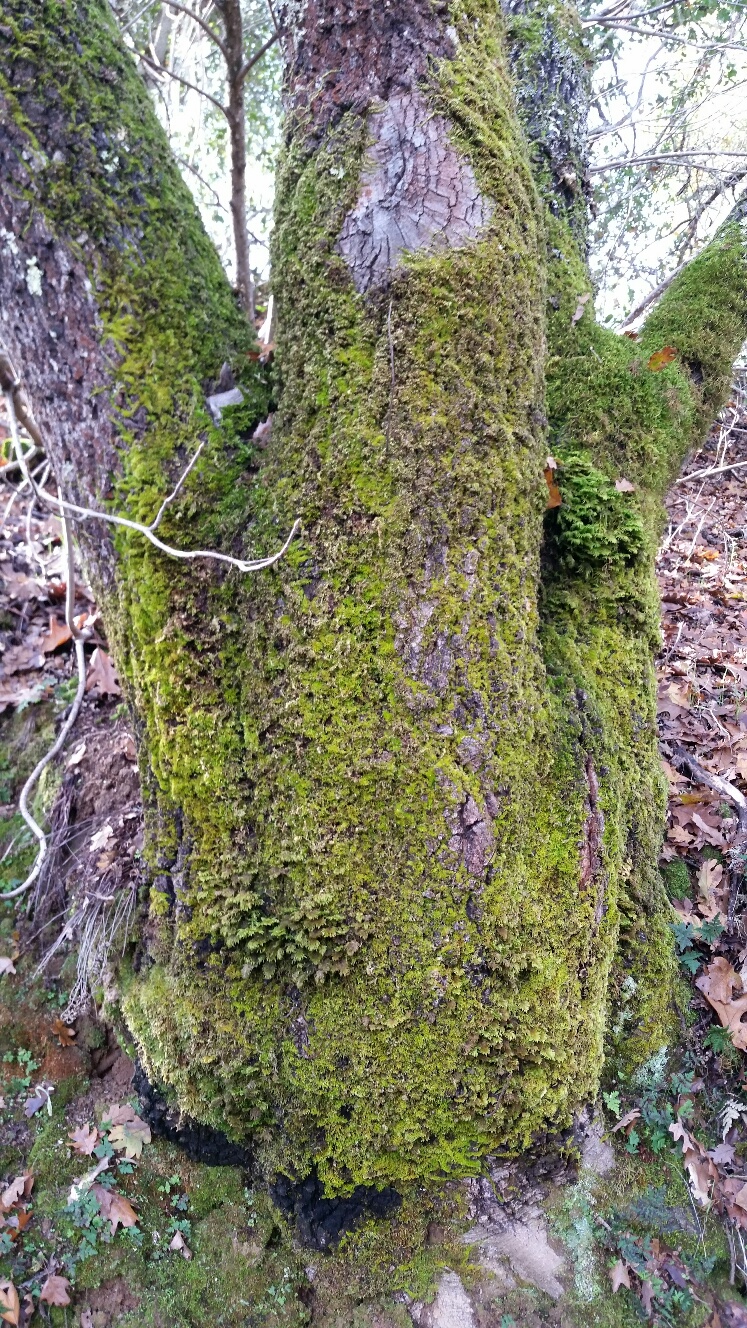
I even found deer hoof prints in the rain softened soil.
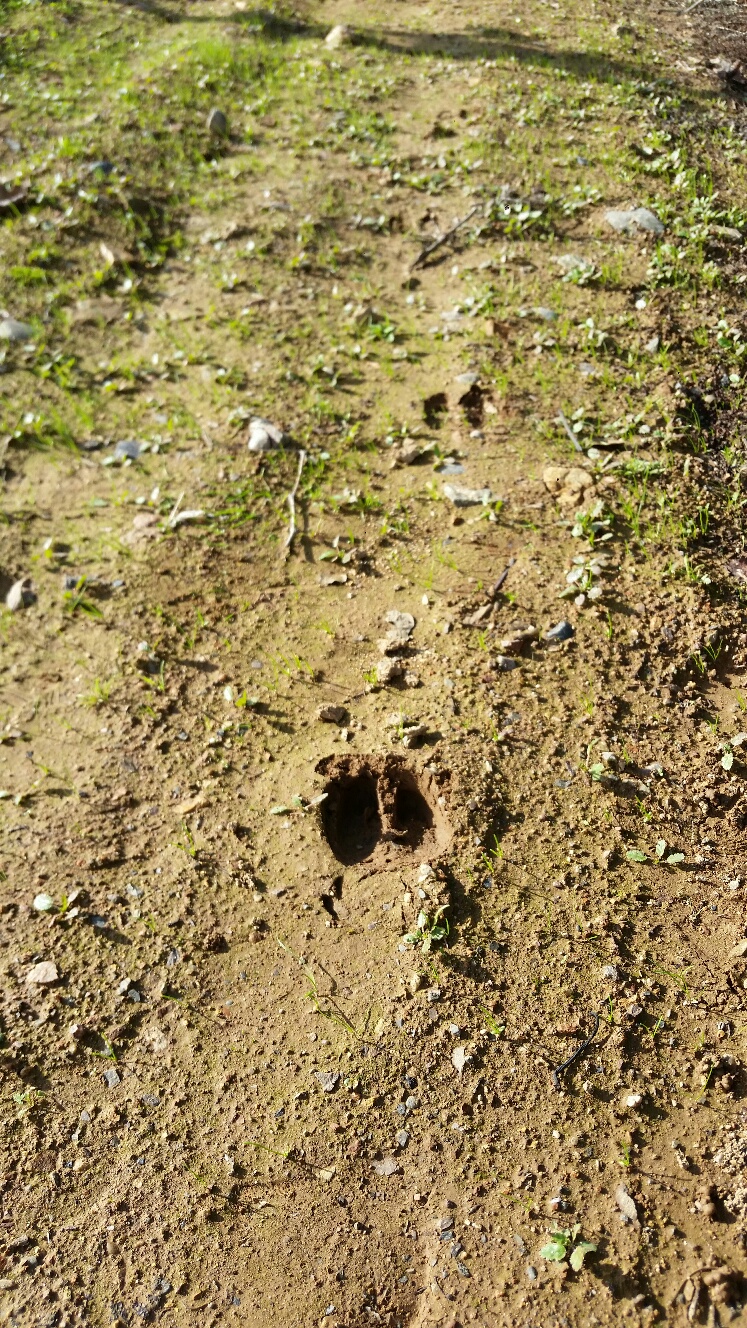
-
90 Cities for our 90th!
November 30, 2017 15:54
Earlier this year I wrote a press release and it included the following proclamation which encapsulated our year-long celebration of our 90th Anniversary: “Kicking off the year’s festivities was a January wine dinner in Illinois, followed by a Valentine’s Dinner; special participation in Wine Road’s Barrel Tasting (March), Sonoma County Vintners Barrel Auction, & Passport to Dry Creek Valley (April), marking the 90th anniversary on July 22 with a trade and media event, a Wine Club Commemoration on August 12, Taste of Sonoma in September, Sip and Savor Club Dinner on October 14 (which was cancelled due to the Sonoma County firestorm) and river cruises in May and November. In between, members of the Pedroncelli family will be working their way through 90 cities as they market wines and host dinners across the U. S. and beyond, all with a special attention given to their 90-year history and glimpses of what’s to come in the next 90.
Here are all 90 cities covered-and beyond (note: two of our trips were cancelled due to the hurricane in Texas and then the firestorms in wine country): Julie: DeKalb, Chicago, Geyserville (-really a town but it counts), San Francisco, Healdsburg, Santa Rosa, Windsor, Napa, Sacramento, Quebec City, Montreal, Ottawa, Toronto, Seattle, Kirkland, Bellevue, Burien, Colombia City, Charlotte, Blakeney, Davidson, Raleigh, Durham, Chapel Hill, Boston (including Newton, Fitchberg, Holliston, Franklin), Manhattan, Eugene, Portland, Lake Oswego, Beaverton, Ashland, Medford, Truckee, Saratoga Springs, Manhattan (2nd visit), Brooklyn, Washington DC, Bethesda, Julie & Ed:London, Budapest, Vienna, Weissenkirchen, Melk, Linz, Salzburg, Passau, Vilshofen and Sedona (52). Ed: Denver, Arvada, Evergreen, Boulder, Centennial, Littleton, Lakewood, Conifer, St. Louis, Columbia, Washington DC, Alexandria, Potomac, Annapolis, Wilmington, Atlanta, Kansas City (KS), Lenexa, Lawrence, Miami, Ft. Lauderdale. (21) Mitch: Jackson, Biloxi, Hattiesburg, St. Louis, Columbia, Chesterfield, Jefferson City, Dallas, Fort Worth, Houston. (10) Richard: Cape May, Cherry Hill, Clifton, Garfield, Hackensack, Ho Ho Kus, Jersey City, Montclair, Seacaucus and Marmora (10).
The Grand Total of 93 cities! We won't be resting on our laurels. Now onto the next 90 years and cities. Cheers with a splash of Zinfandel in my Dino.
-
Lifetime Achievement
November 30, 2017 15:40

Last month the Pedroncelli family celebrated a special moment when Jim was awarded the Lifetime Achievement Award from North Bay Business Journal. They had sent out a call for nominations in September and I was the one who nominated my father not knowing they would turn it into such a prestigious honor. Well-deserved comes to mind. Fitting for a man who has spent his entire life, outside of college and service in the Army, working for the family business of wine. This year marked his 60th as sales and marketing manager for the winery! The exclamation point doesn’t do this justice. He didn’t rest on his laurels at the age of 65-we joke there is no such thing as retirement in my family and Jim is the prime example.
I was asked by the publisher, Brad Bollinger, to introduce Dad and give some background. Here then are my comments.
Before I begin my dad gave me some advice: Keep it Short.
Born in 1932 just as Prohibition would end, he worked side by side with family in the vineyard and cellar learning from the ground up. The early 1940s found him contributing to the war effort by chipping tartrates off of the redwood tanks and sending them in to munition factories. After high school he attended St. Mary’s College in Lafayette and achieved an Economics Major. Service in the Army followed and in 1957 he began as Sales Manager for the business. This is after he suggested adding Sonoma County to the labels among other input he already had with the winery. Soon after he met my mom Phyllis and they married, beginning a life together and gaining four daughters. Jim began locally selling and delivering wines to Healdsburg, Sonoma County, and the San Francisco Bay Area. One of my fondest memories, one that I have written about before, is going on one of those weekly San Francisco deliveries in the big yellow Dodge? Truck. It was great to be away from my sisters…and to spend time with Dad.
Sales beyond our backyard: During the 60s and 70s he developed the national distribution network that is, in many cases, still in place with the original wholesaler-many of them also multigenerational. Once the national sales network was established he went on to international sales beginning in Canada and extending into Japan-two very strong markets for us today. He established a broker network inside the US market called Winery Associates with 5 other wineries. Groundbreaking because it put a network of sales people who lived in our most important markets and each became a brand ambassador for Pedroncelli. I call this period The Next Generation. How the second generation beat the odds of family succession going beyond the first two generations. This was done by careful planning and pinpointing what worked in the market in order to pass along a thriving business to the third and fourth generations. Named an Icon of Sonoma County earlier this year at the Sonoma County Vintners Barrel Auction he takes all of these awards in stride. He is a charter member of Sonoma County Vintners, Wine Road, Sonoma County Grape Growers, Winegrowers of Dry Creek Valley, long term member of Wine Institute. He works 7 days a week with a simple approach to life. You’ll find him at lunch with a little bread, cheese and a glass of red wine. There’s no hidden secret to success: quiet hard work over 8 decades. My sister Lisa put it this way: His lifetime achievement should be having raised four daughter through their teenage years. And we have all worked with him in some capacity-and he lived through that as well!
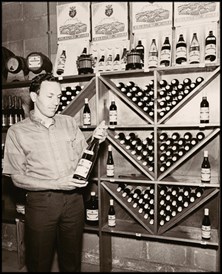
-
The Barrel Report: Fruit & Wood
October 31, 2017 09:23
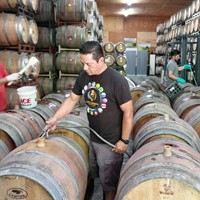
Even though we finished picking grapes on September 29 the cellar was still filled with fermenting the final tanks of 2017 through the third week of October. Now the last tank has been emptied, the crushpad and presses have been cleaned and retired for the season, and these wines are awaiting the next step whether it is to wait in the temperature controlled tank until bottling or to wait for a turn in barrels to age for a year or more. Barrel aging is the most important stage for red wines. You could call oak aging a multi-tasker as it plays a many layered roll in softening and developing the young wine. Our winemaker, Montse Reece, works with our house style in determining the use of oak. There are a few levels of choice from the type of oak (American, French, Hungarian) to the toastiness of said wood (light, medium, dark-barrel heads toasted or untoasted). Since the wine will be stored in there for a year-on average-it is important to choose wisely when it comes to our house style.
What is our style? Wines which are easily approachable, balanced between the fruit and the wood. American oak is the first choice for almost all of our red wines. French oak is used for our Pinot Noir and Cabernet Sauvignon and is desired for its’ backbone of tannin and warm spice notes as compared to the softer wood notes and hints of dill in American oak. Medium toast is preferred across the board with toasted barrel heads combined to add the complexity of toasty oak notes. Our focus is on expressing the fruit of a particular varietal and choosing the wood to complement it. Lastly our style calls for smaller amounts of new oak which results in a fruit focused wine without finding a 2 x 4 in the bouquet.
Polo Cano, our cellarmaster and the one in the photo at top, will be working in the Barrel Room over the next few months with his crew as they ready the 2016 vintage for bottling in the spring and add the 2017 vintage to their year-long home. A toast (pun intended) to the great multi-tasker, the barrel.
-
A Fall Day in Dry Creek Valley: Visit, Sip, Eat, Repeat
October 31, 2017 09:18
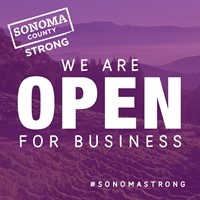
Fall: We call it the shoulder season here in Dry Creek Valley. The vineyards are mostly alive with the fall colors of red, orange, yellow and brown-kind of like the afghan my grandmother crocheted for me when I was a kid-she used my favorite colors! Mother Nature is weaving my favorite colors into the hillsides around me. The weather is pleasant with warm and shorter days giving way to cool nights. A recent sprinkling of rain produced my 2nd favorite smell in the world (besides fermenting wine). It is the oak leaves that have fallen and give off the most pungent and wonderfully acrid smell which signals autumn. More rain is expected over the first weekend of November-fall is here which means more dust will be settled and the pungent scent I love will be wafting on the breeze.
The vineyards and surrounding hillsides are turning color, the vines and oaks losing leaves with the increasing breezes. The vineyard crew is pre-pruning so you’ll see some of the vines already cut back to a foot or so of cane-this prepares them for the actual pruning that will be done later in the winter/early spring where the foot long cane is pruned back to two buds-the 2018 crop. We have learned that pruning the vines in this way helps prevent disease from spreading by providing a buffer before it is officially trimmed to the next year’s crop. Flocks of geese are flying overhead going south for the winter-or to the nearest lake. The starlings usually begin their amazing acrobatics about now--I know they can’t resist the leftover grapes on the vines which in turn ferments and makes them a little crazy. To the north of us at Lake Sonoma the wildlife population is beginning to settle into preparations for winter. The serene water at this time of year is peaceful surrounded by oak and fir. A picnic there or on our deck at the winery will afford you grand views. No picnic? Grab lunch at the Dry Creek General Store or head into Healdsburg or Geyserville for a bite to eat.
Many people wonder what to do now the fires have been contained. Day trips are wonderful ways to explore the different counties. Many of our trade associations are putting together itineraries for you. They’ll guide visitors like you to the large percentage of “Wine Country” that hasn’t been damaged. Visit, Sip, Eat, Repeat. We’ll have a splash of Zinfandel ready for you.
-
Wine Country Report: After the Fires
October 31, 2017 09:09

October 2017 will forever be defined as before the fires and after the fires for those of us in Wine Country. Like the recent hurricanes in the south, the 1989 earthquake and other disasters we will always remember where we were when they took place. I know how things could have turned out if the wind had whipped up again or the fire jumped the line and headed our way. It would have been a story for the ages losing everything like many of our fellow winery owners and homeowners alike. In the previous post I talked about how we weren’t affected by the wildfires to the east and south of us. Our area is untouched by fire having been saved the heartache by countless (and by that I mean thousands upon thousands) first responders who fought the fires with all they had-and some even while their own homes burned. They all have our deepest thanks for their efforts.
There is something troubling to me in the last couple of weeks. I have found it is a bit confusing to read headlines proclaiming “Wine Country Devastated by Wildfires” as that covers all of the four counties involved: Sonoma, Napa, Mendocino and Lake. Our little corner of Dry Creek Valley is safe, picturesque, and the vineyards are showing their fall colors now. I’ll give you an example and perhaps this will help the larger picture: there are over 1 million acres of land in Sonoma County alone and the wildfires destroyed about 10% mostly in non-urban areas except to the south in Santa Rosa. Vineyards even became fire breaks because they don’t have much fuel on the ground like the grassy areas outside of them. Headlines of smoke taint were also touted as destroying the 2017 vintage completely. Not true. We picked our last grapes on September 29-10 days before the fires. There was no disruption during fermentation and winemaker Montse Reece said there are no problems of smoke taint at Pedroncelli-and it is true for our neighbors as well. Harvest was almost over by the time the fires erupted and the majority of the grapes were already in at the winery. The vintage has not been destroyed.
Here are some numbers to keep in mind: 90% of the winegrapes had been harvested by October 9 when the fires began. 90% of over 1 million acres were not burned in Sonoma County. Remember the ‘90s’ when it comes to the first 2017 wines on the market. And we’ll celebrate our 90th harvest when they are released!
-
A Note From Home: North Bay Fires & Beyond
October 19, 2017 09:36

Dear Friends,
First of all, on behalf of my family, thank you very much for all of your phone calls, emails, texts and social media messages conveying your deep concern for our lives and livelihood during the fires and the devastation that was playing out over all media channels.
The good news is we are all fine-Dry Creek Valley was left untouched by the fires. We are thankful that family and staff are safe and the winery, which was several miles west of the closest fire, is still standing. In an abundance of caution, due to the vagaries of the fire and the air quality, we chose to close our Tasting Room and to cancel our Sip & Savor event scheduled on October 14. This was unprecedented but we wanted everyone to remain safe. That was last week and we re-opened for business on October 16 and many of our winery, restaurant and hotel neighbors are open as well.
While our valley was untouched, many have lost their homes, jobs, and loved ones. The communities of Sonoma County have come together to offer their services via food, shelter, donations, a shoulder to cry on, and their time as volunteers. The amazing first responders and all other agencies (some local, some from Australia & Canada) came to our rescue in more ways than one and worked hard at combating and containing the fires so that we all felt safeguarded. Our local radio stations like KSRO and KZST gave the airwaves over to reports with Supervisors, the Sheriff, Fire Chiefs and other officials. We were and are working together to be aware of opportunities to help and bring healing to our beautiful wine country.
We have had many requests about where to donate and help out and have included a few agencies where a donation will help support recovery and rehabilitation in the devastated areas.
Sonoma County Resilience Fund through the Community Foundation
Sonoma County Search & Rescue The mission of this group is to assist Sonoma County Sheriff's Dept. with missing or lost persons; rescue as needed and mutual aid when called.
Redwood Empire Food Bank which supports all food efforts within the area.
#CAWineStrong Under this slogan Wine Industry leaders have formed a support network to provide immediate assistance and long-term aid to the victims of these fires. I am also amazed and awed by the support the likes of Paso Robles, Santa Barbara, Livermore and beyond are fundraising as I write this.
We are also galvanized to help our neighbors. We are donating $1 on every bottle sold in our tasting room from now until November 1st.
We came through the week unscathed, our hearts go out to those who lost everything. We've been here for 90 years, and plan to be here for 90 more. It is times like these when we are thankful for what is important in our lives: family and friends like you.
Sincerely,
Julie Pedroncelli St. John and The Pedroncelli Family & Staff
707Strong
-
I'm Not Done Yet: Fermentation
September 28, 2017 07:16
The theme of harvest this month includes the end of harvesting grapes but the cellar crew doesn’t consider harvest over until the last tank of wine has been fermented and pressed and sent to rest and await barreling in the winter. The process of fermentation, which transforms the sugar in the grapes to alcohol through a little chemical magic utilizing yeast, is the beginning of wine. The vineyards have done their work growing the grapes but once they are in the tank it is the winemaking crew that begins the transformation from a sticky mass of juice and berries to new wine.
We use temperature controlled stainless steel tanks to hold the must-which is a combination of the juice, skins and seeds transferred from the crush pad. If the grape is a white varietal like Sauvignon Blanc the must goes directly to press where the skins and seeds aren’t needed and then is transferred to tank for fermentation. Red wine grapes like Zinfandel go directly past the press and into the tanks. In the case of both white and red grapes the must rests for 24-48 hours to chill before yeast is introduced to begin the fermentation. This gives it time to cool down and the importance of this is to slow the process down to give time to the actual fermentation. Akin to a race horse, the juice is raring to get out of the gate and finish-which doesn’t allow for development of flavors. The winemaking team chooses the right yeast for the right grape in order to get the best out of the grape.
Another way to get the flavor developed is to pump over the cap. The skins and seeds naturally rise to the top of the tank so the juice is pumped up and over the cap-kind of like the immersion of a tea bag where you get more color and flavor when immersed. This occurs every day until fermented dry-every last ounce of sugar is converted to alcohol.

Some wines go through the secondary fermentation called malo-lactic fermentation. Quick definition: malic acid is similar to tart green apple, lactic acid is similar to butter. Sauvignon Blanc and our Rose do not go through this process but part of our barrel fermented Chardonnay does and all red wines do. The reason? This secondary process softens the wine and instead of rustic rough edges you'll have one with smoother mouthfeel (or palate appeal).
Now that we are finished with the fermentation the next stop is the press (for red wines) to remove the skins and seeds. The resulting mass is called pomace. It is taken up to the vineyard to 'season' for a year and then we add it back to the soil. Now we're done with harvest-in real time it will be mid-October before the final pressing. Until then I'll toast this harvest with a splash of Sauvignon Blanc!
Categories
- COVID
- Follow the Vineyard
- Note from Home
- PairItWithPed
- Pandemic
- pedroncelli
- Port
- Postcards from Home
- Pruning
- Seasons in The Cellar
- Tasting Room
- Thanksgiving
- Vintage Notes
- Winemaking
- Women's History Month
Recent posts
-
91 Years Later
-
Come Over October: It's About Community
-
Come Over October
-
A Legacy Continues!
-
Everything Old is New Again
Popular tags
- French Oak
- Sauvignon Blanc
- Schotzki
- Estate Vineyard
- Recipes
- Easter
- Barrels
- Courage Zinfandel
- Cellar Master
- Cabernet Sauvignon
- cheese
- Lake Sonoma
- COVID Coffee Chat
- Harvest 2022
- Oak
- family
- Habit
- Finding Your Roots
- Pedroncelli
- Sonoma County
- Mother Clone
- Pruning
- COVID19
- Seasons in The Cellar
- American Oak
- Dry Creek Valley
- Reserve
- Anniversary
- Block 007 Cabernet Sauvignon
- PairitwithPed
- Library Wine
- Pandemic
- Bushnell Vineyard
- note from home
- Cookies
- Rosé
- Pantry
- 1974 Cabernet Sauvignon
- Follow the Vineyard
- food and wine
- newsletter
- Crop set
- Four Grapes Port
- Heat wave
- Holding steady
- Homecooking
- Down to Earth
- OpenThatBottleNight
- Merlot
- cooking with wine





